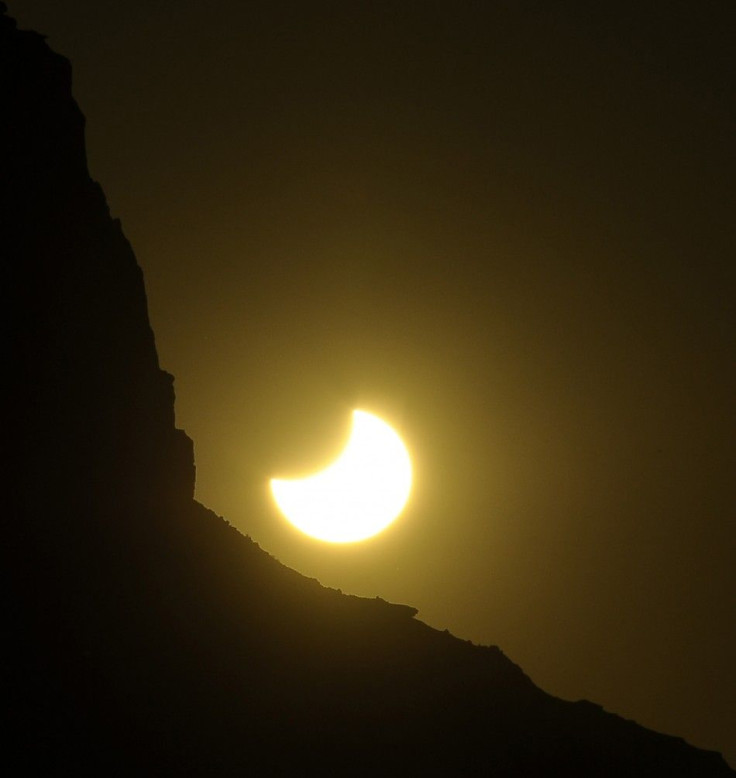Hybrid Solar Eclipse Live Stream And Other Ways Early Sunday Risers Can View The Event

Sunday’s rising sun will be a unique one as it will be a hybrid eclipse. On Nov. 3, the sun will look like a crescent and those with an unobstructed view of the eastern horizon will be able to get a good view the solar eclipse.
The solar eclipse on Sunday starts off as an annular eclipse (the moon does not block out the sun and leaves a bright ring) before becoming a total eclipse, reports the New York Times. Those on the east coast of the United States will have a chance to observe the hybrid solar eclipse but pay attention to your clock as Daylight Savings Time ends and the clock “falls back” an hour. The New York Times lists sunrise at 6:29 a.m. EST in New York City and the solar eclipse will last for 45 minutes.
The moon will cover 60 percent of the sun, reports NYT, and the total eclipse will last for just two minutes. In order to see the solar eclipse, viewers should look to the eastern horizon but not directly at the sun. The easiest way is to create a pinhole projector that will create an image of the sun on a sheet of paper. The quick crafts project requires a long box at least 6 feet in length, aluminum foil and a pin, reports Exploratorium.

Users should cut a hole at one end and place the aluminum foil over it, poking a hole though the foil. A square viewing hole is cut on the other end and the piece of paper is inserted into the box, and the image of the sun and solar eclipse is projected onto the piece of paper. Exploratorium has pictures and a comprehensive step-by-step guide to building your own pinhole projector. Eclipse glasses are also an option, but may be difficult to find, whereas a crafts project such as a pinhole projector or a modified viewer, requires only easily obtainable items.
Solar eclipses are also incredibly useful for astronomers, notes NYT, but NASA’s Solar Dynamics Observatory, Japan Aerospace Exploration Agency’s HINODE and other solar observatories are relied upon for their ability to provide detailed images of the sun and related solar activity. A solar eclipse enables astronomers on Earth to observe parts of the sun’s atmosphere whose brightness would damage the sensors of these solar observatories.
If you can’t get a clear view of the eastern horizon, or you don’t want to risk your eyesight, Slooh, an international network of astronomers and observatories, will be providing a live stream of the solar eclipse. Slooh will have live feeds of the solar eclipse from observatories in Kenya, the Canary Islands and Gabon.
Slooh says there are a few things observers should look for during the solar eclipse: solar prominences, gases that extend outward, as well as the shape of the solar corona, will be among the highlights. Slooh’s live stream will include guests and will be hosted by Paul Cox, Slooh’s technical officer. The public will also be able to tweet questions during the live stream. While the solar max portion of the current solar cycle has been rather quiet, there has been a dramatic increase in solar activity within the last few weeks, including several solar flares and coronal mass ejections.
The solar eclipse live stream begins at 3:45 a.m. PST, 6:45 a.m. EST and can be viewed below.
© Copyright IBTimes 2025. All rights reserved.






















